Red flowers name is a symbol of passion, love, and admiration, and there is a wide variety of red flowers that range in size, shape, and scent. One of the most popular red flowers is the rose. Roses come in various shades of red, from deep crimson to bright scarlet, and are often given as gifts to show affection and love. Another popular red flower is the poppy.
Beautiful flowers with vibrant red color and delicate, papery texture are popular for bouquets and floral arrangements. Other red flowers include the tulip, symbolizing perfect love, and the carnation, often given as a sign of affection and admiration.
Red flowers can also be found in more exotic species. For instance, the amaryllis features large, trumpet-shaped blooms, and the hibiscus has a unique tropical appearance. Regardless of the species, red flowers are sure to add a touch of elegance and passion to any setting.
Amaryllis Hippeastrum
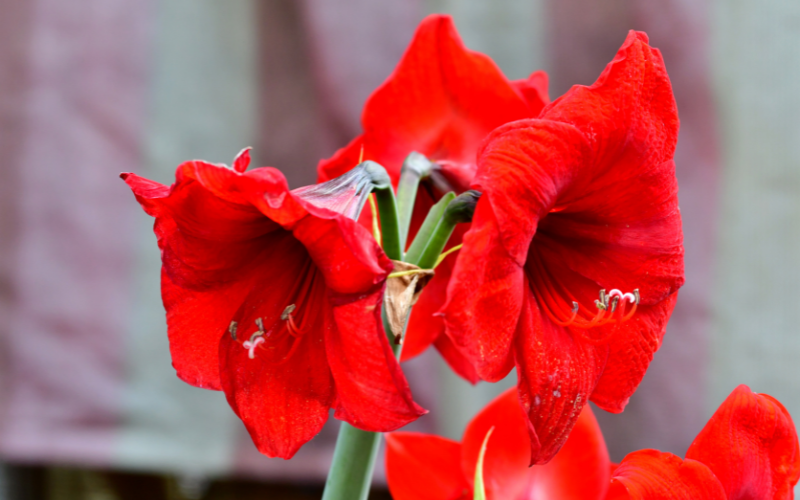
Amaryllis Hippeastrum is a beautiful flowering plant that is native to South America. It is known for its stunning trumpet-shaped blooms that come in a variety of colors ranging from white and pink to red and even striped.
Taking care of this plant is relatively easy as long as it gets proper sunlight, watering, and fertilization. Amaryllis Hippeastrum is usually grown indoors but can also be planted outdoors in a warm and sunny spot. It’s a popular choice for winter growing because it blooms in late fall or early winter, adding a nice touch of color to any home.
| Scientific Name | Hippeastrum |
| Native Range | South American |
| Flowering Season | Winter |
Alstroemeria

Alstroemeria, also known as the Peruvian lily, is a beautiful and delicate flower native to South America. These flowers are available in a wide range of colors, including pink, red, orange, yellow, and white, making them a popular choice for bouquets and floral arrangements.
The Alstroemeria is a symbol of friendship and devotion, making it an ideal choice for gifts to close friends and family members. In addition to its beauty and symbolic meaning, the Alstroemeria is also a hardy flower that can last for up to two weeks in a vase.
| Scientific Name | Alstroemeria |
| Native Range | South American |
| Flowering Season | Early summer to late autumn |
Zinnia elegant
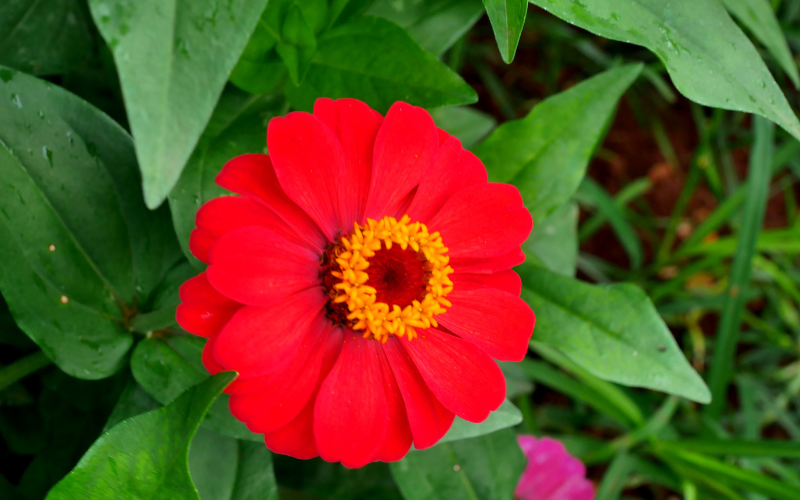
Zinnia elegans is a species of flowering plant that belongs to the family Asteraceae. It is native to Mexico and was first discovered by a botanist in the late 18th century. Since then, it has been widely cultivated as an ornamental plant around the world.
The plant comes in a variety of colors, from bright yellow to deep red. Known for its vibrant, long-lasting blooms that attract bees, butterflies, and other pollinators, zinnias are popular among gardeners. They are easy to grow and maintain, making them an excellent choice for both novice and experienced gardeners. With regular watering and fertilizing, zinnias will bloom from mid-summer until the first frost, bringing a splash of color to any garden or landscape.
| Scientific Name | Zinnia elegans |
| Native Range | South and Central America, the West Indies, the United States, Australia, and Italy |
| Flowering Season | Summer to early fall flowering |
Calla Lily Zantedeschia
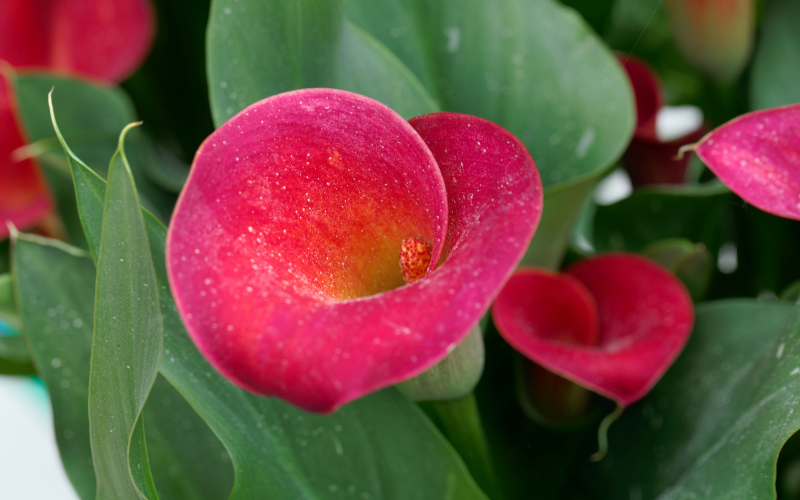
The Calla Lily (Zantedeschia) is a strikingly beautiful plant, recognized for its distinctive shape and vivid colors. This beloved indoor plant originates from South Africa and belongs to the Araceae family. It is characterized by its trumpet-shaped flowers and broad, glossy leaves, which are known for their air-purifying properties. The Calla Lily (Zantedeschia) can be found in a range of colors, such as white, pink, yellow, and purple.
They are commonly used in wedding bouquets and centerpieces because of their elegant appearance. If you want to bring this beautiful plant into your home, remember that it needs bright, indirect sunlight and regular watering.
| Scientific Name | Zantedeschia |
| Native Range | Southern Africa |
| Flowering Season | Late spring to summer |
Tulipa
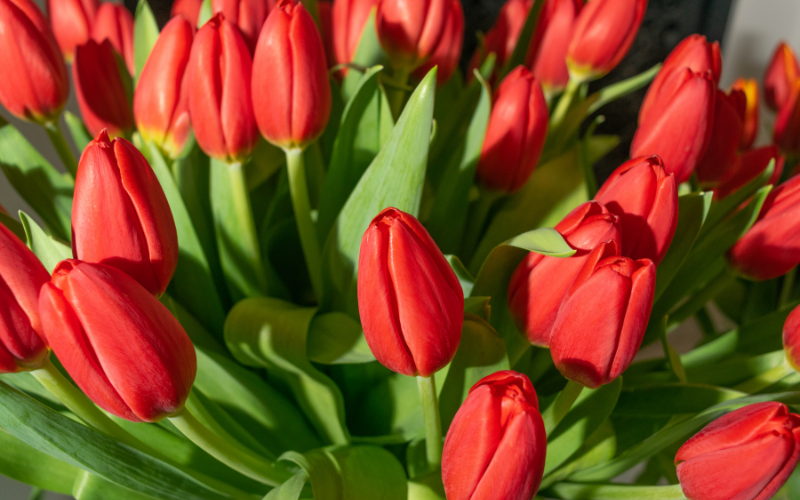
Tulipa, better known as tulips, are one of the most widely recognized and beloved flowers around the world. These beautiful flowers come in a variety of colors such as red, pink, purple, yellow, and white, with each color having its unique meaning. For example, red tulips symbolize love and passion while yellow tulips represent happiness and friendship.
Tulips are often connected with the Netherlands, where they serve as one of the country’s most iconic emblems. The Dutch even host an annual Tulip Festival, showcasing fields upon fields of tulips in all their vibrant glory.
| Scientific Name | Tulipa |
| Native Range | Portugal and Morocco to Western China |
| Flowering Season | Spring |
Cockscomb Celosia
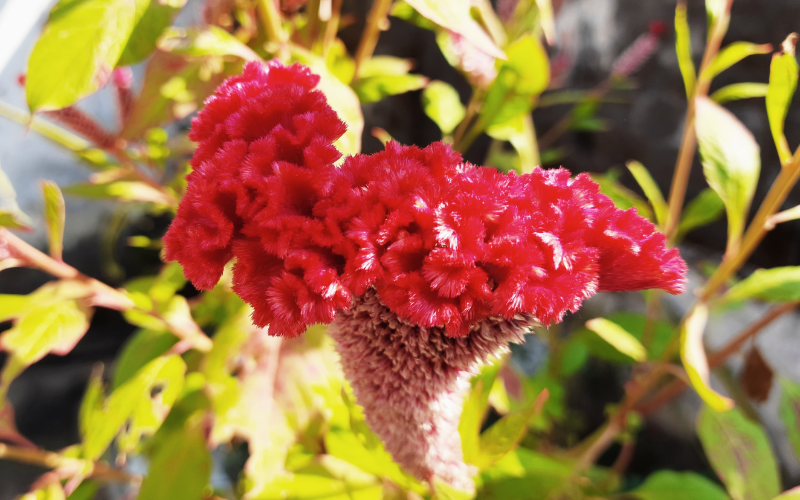
Cockscomb Celosia is a unique and beautiful flower that comes in a variety of colors, including red, pink, orange, and yellow. Its name comes from the shape of the flower, which resembles a rooster’s comb.
This flower is native to tropical regions and is often used in tropical-themed floral arrangements. It has a long vase life, making it a great choice for cut flower arrangements. Additionally, it has been used in traditional medicine to treat ailments such as diarrhea, dysentery, and skin infections. Overall, Cockscomb Celosia is a unique and versatile flower that can be enjoyed for its beauty and medicinal properties.
| Scientific Name | Celosia |
| Native Range | West Africa or India |
| Flowering Season | Spring to summer |
Begonia
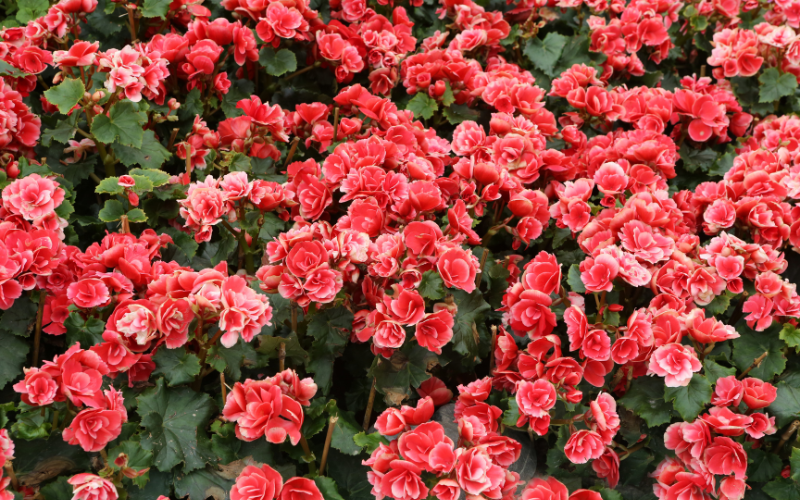
Begonia is a diverse genus of flowering plants that belongs to the family Begoniaceae. There are thousands of Begonia species, each with its unique characteristics. Begonia flowers come in various shapes, sizes, and colors.
Begonias come in single or double varieties, with petals that can range from delicate and translucent to bold and vibrant. You can find them in various colors, including shades of pink, red, orange, yellow, and white. Depending on the species, begonias can be annuals, perennials, or evergreen plants. They can grow as compact, bushy plants or trailing vines, making them suitable for a variety of gardening purposes.
| Scientific Name | Begonia |
| Native Range | Central and South America, Asia, and sub-Saharan Africa |
| Flowering Season | Summer |
Perennial Geranium
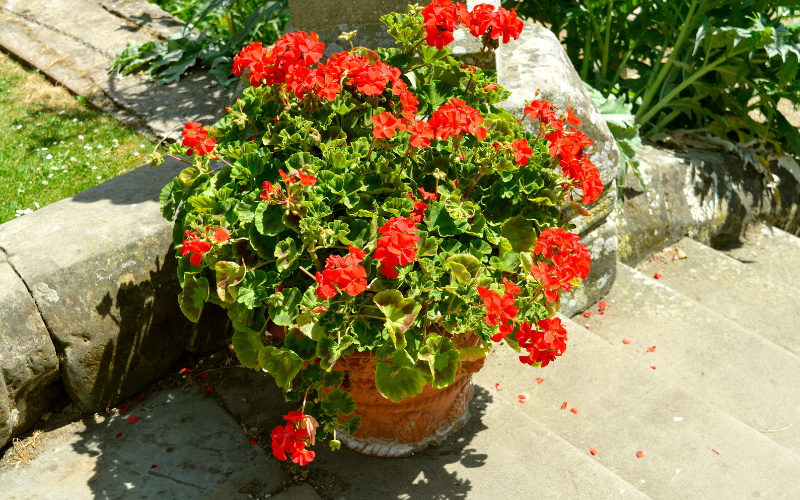
Perennial Geranium, also known as hardy geranium or cranesbill, is a type of flowering plant that belongs to the Geranium genus. The flowers typically have five petals and a distinctive shape, resembling a crane’s bill, which gives them their common name. Perennial Geraniums have a clumping growth habit, with stems that radiate from a central base.
The plants can vary in height, with some varieties reaching a few inches in height, while others can grow up to several feet tall. Perennial Geraniums are hardy plants that can withstand various climatic conditions. They are often considered low-maintenance and can thrive in different types of soil, as long as it is well-drained.
| Scientific Name | Geranium bohemicum |
| Native Range | North America, Europe and Asia |
| Flowering Season | Spring |
Streptocarpus
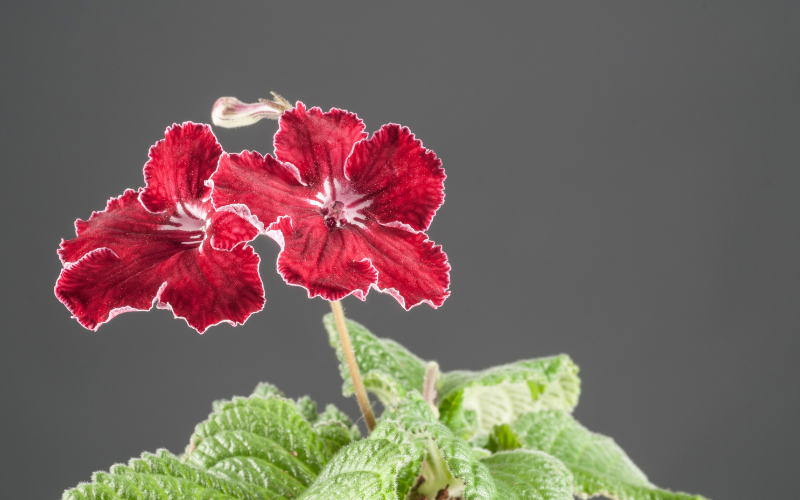
Streptocarpus, also known as Cape Primrose, is a genus of flowering plants in the family Gesneriaceae. These plants are herbaceous perennials with lush, green leaf rosettes. The main attraction of Streptocarpus plants is their blooms, which come in a variety of colors such as purple, blue, pink, white, and red.
The tubular blooms have five petals and typically feature elaborate designs and markings. Streptocarpus hybrids have been created to display an even greater variety of flower colors and patterns. In comparison to their wild relatives, these hybrids frequently have larger flowers and greater vigor.
| Scientific Name | Streptocarpus |
| Native Range | Central, eastern, and Southern Africa, including Madagascar and the Comoro Islands |
| Flowering Season | Spring to autumn |
Ranunculus
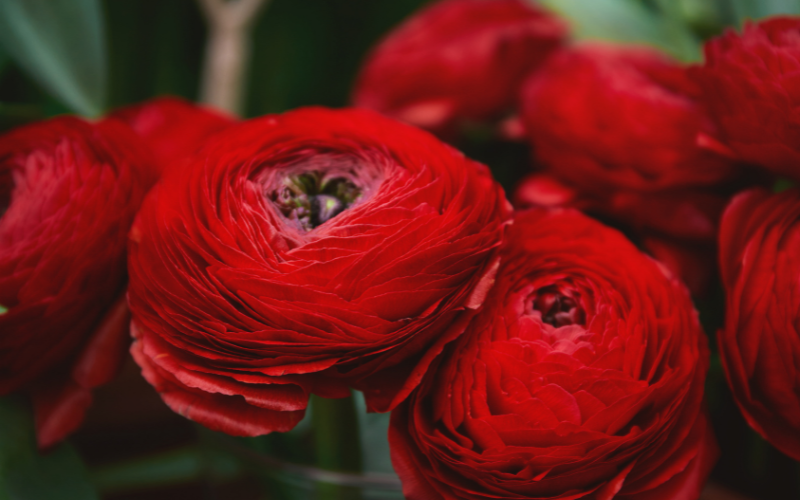
Ranunculus is a genus of flowering plants in the family Ranunculaceae. It includes many beautiful species commonly known as Ranunculus flowers or Buttercups. Ranunculus flowers are known for their vibrant, showy blooms and have multiple layers of petals that form a rose-like or peony-like shape.
Ranunculus flowers thrive in cool climates and prefer well-draining soil. They require full sun to partial shade and benefit from regular watering to keep the soil evenly moist. In warmer regions, they can be grown as annuals or in containers.
| Scientific Name | Ranunculus |
| Native Range | North Africa, Europe, western Asia, North America |
| Flowering Season | Spring to summer |
Amaranthus
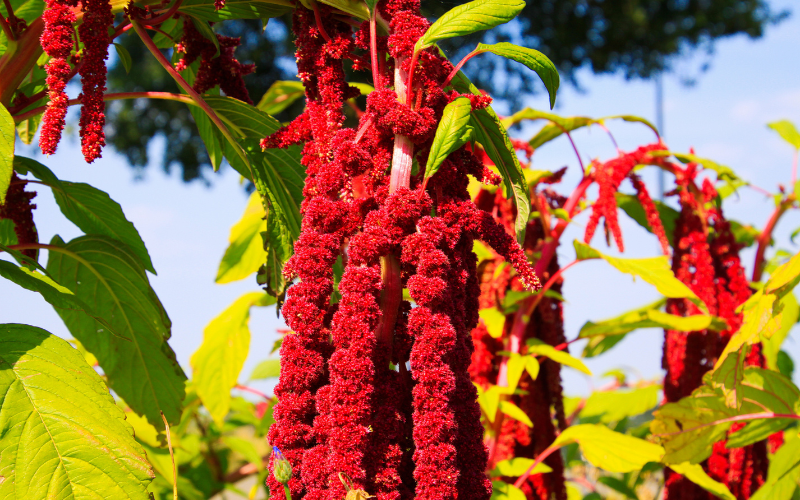
Amaranthus, also known as Amaranth, is a stunning and unique flower with distinct, vibrant, and colorful flowers that can range from red, pink, purple, green, and even gold, depending on the species and variety.
This plant is easy to cultivate and maintain. Its distinctive appearance and adaptability make it a preferred choice for gardens.
| Scientific Name | Amaranthus |
| Native Range | North and Central America |
| Flowering Season | Late spring, summer, and early autumn |
Anemone
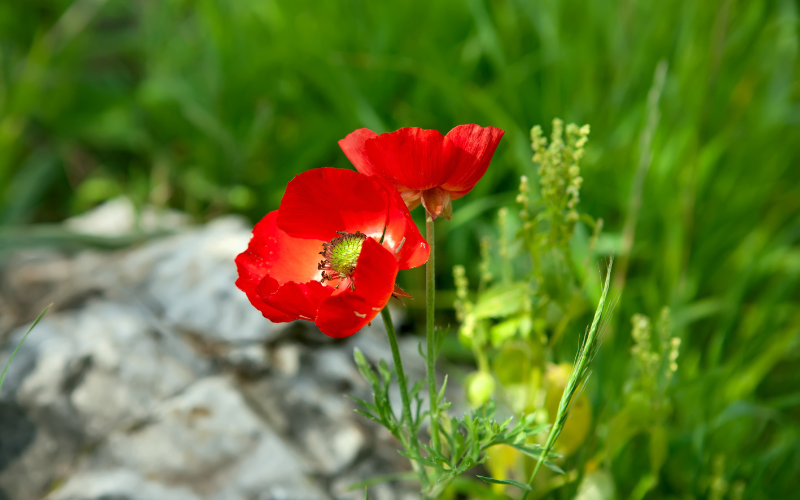
The Anemone is a beautiful flower native to North America, Europe, and Asia, and comes in a wide array of colors, including white, pink, purple, blue, and red.
Anemones typically thrive in well-draining soil and partial shade, making them suitable for woodland gardens and shaded areas. Besides their stunning beauty, anemones also carry symbolic meanings and are associated with luck and protection in some cultures.
| Scientific Name | Actiniaria |
| Native Range | Australia, New Zealand and Antarctica |
| Flowering Season | Spring into the Fall months |
Anthurium
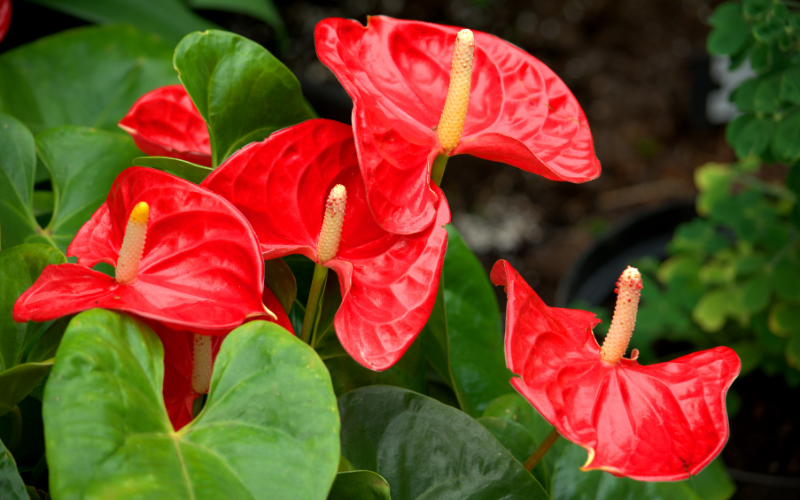
The Anthurium is a beautiful flower. Anthuriums are native to tropical regions of Central and South America. The Anthurium comes in a range of mesmerizing colors, including shades of red, pink, white, and even purple.
They thrive in warm, humid conditions and bright, indirect light, which makes them suitable for indoor cultivation in many regions. They are often given as gifts to symbolize happiness, love, and friendship.
| Scientific Name | Anthurium |
| Native Range | Northern Mexico to northern Argentina and parts of the Caribbean |
| Flowering Season | All year round |
Bergamot
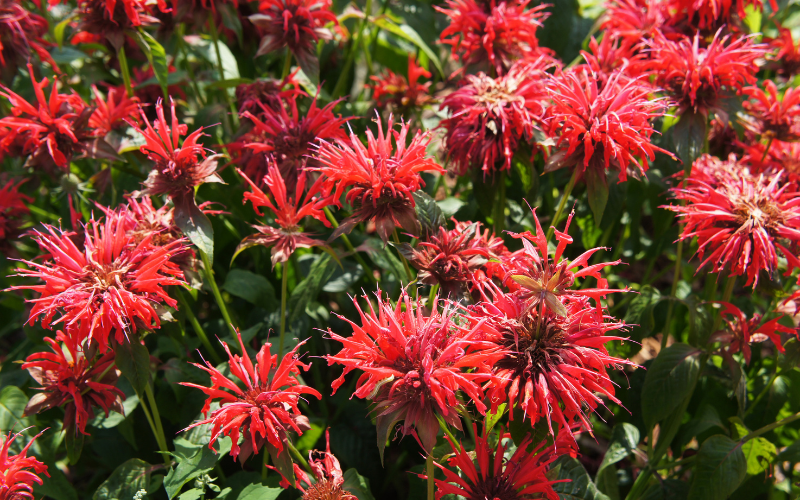
The Bergamot, also known as Monarda or Bee Balm, is a stunning and aromatic flower native to North America.
The vibrant Bergamot flower is recognized by its unique, cone-shaped clusters of tubular flowers in pink, purple, red, or white. Typically, it grows to a height of 2 to 4 feet (60 to 120 cm) and forms clumps of upright stems.
| Scientific Name | Citrus bergamia |
| Native Range | Most of Southern Canada and the United States east of the Rockies, except Maritime Provinces, and peninsular Florida, south to Veracruz in eastern Mexico |
| Flowering Season | Mid-Summer to Early Fall |
Callistemon
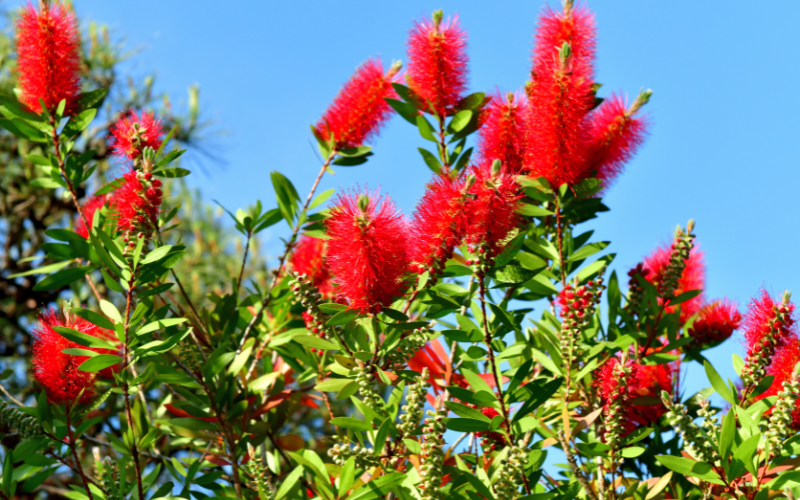
The Callistemon, also known as the bottlebrush flower, is a vibrant and stunning flower native to Australia and nearby islands. These plants are evergreen and can be either small trees or shrubs, reaching heights of a few feet to over 20 feet, depending on the species and growing conditions.
The colors of the flowers may vary depending on the species and variety, including shades of red, pink, purple, yellow, or white.
| Scientific Name | Callistemon citrinus |
| Native Range | Australia |
| Flowering Season | Spring and Early Summer |
Canna
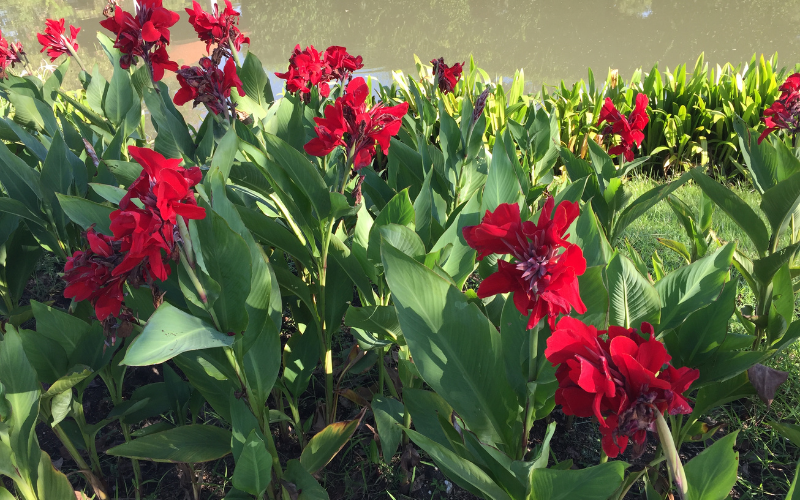
Cannas, also known as Canna Lilies or Canna Flowers, are a stunning addition. These tropical and subtropical plants are native to the Americas, and can grow to heights of 3 to 8 feet (1 to 2.5 meters).
Canna plants come in a variety of colors, such as red, orange, yellow, pink, and even combinations of two colors. They thrive in warm climates and prefer full sun, although they can tolerate some shade. To stay healthy and bloom, they need well-draining soil and regular watering.
| Scientific Name | Canna indica |
| Native Range | South America, Central America, the West Indies, and Mexico |
| Flowering Season | Summer |
Dianthus
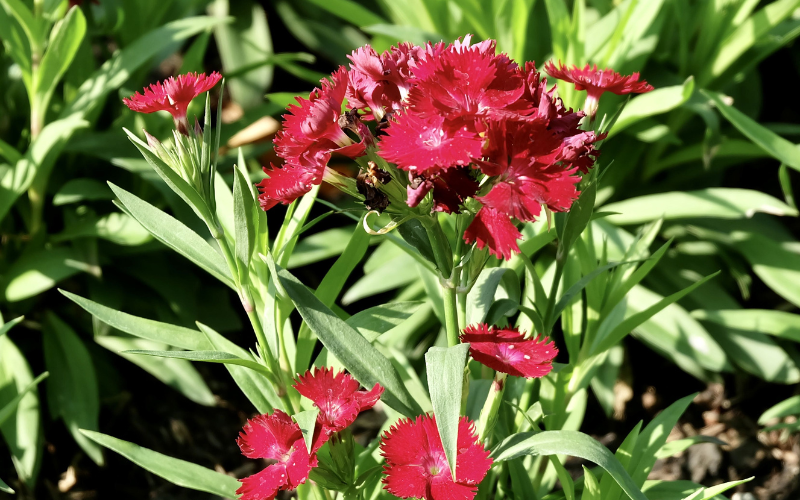
The Dianthus, native to Europe and Asia, is a stunning flower with a wide range of colors including pink, red, white, and bicolor combinations.
They are appreciated for their long-lasting blooms, delightful scent, and easy-to-maintain quality. The Dianthus flower is a delightful and enduring selection that is certain to bring happiness and beauty to any environment.
| Scientific Name | Dianthus caryophyllus |
| Native Range | Europe and Asia |
| Flowering Season | Late spring until early autumn |
Freesia
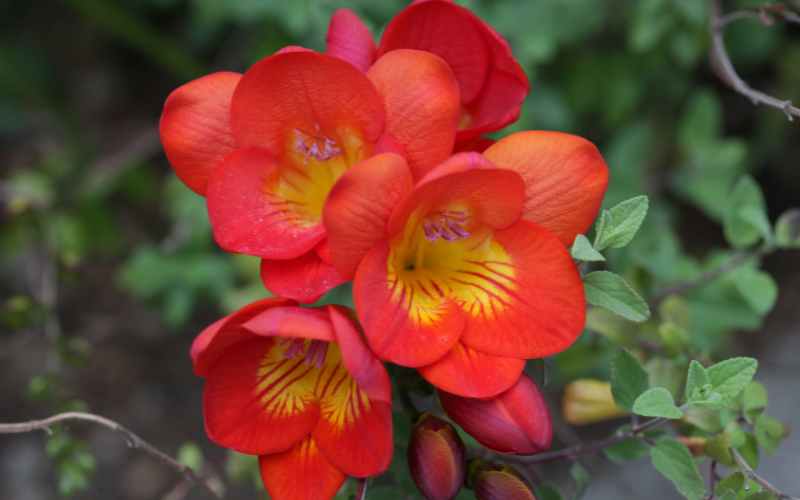
The Freesia is a stunning and captivating flower native to South Africa. Its petals come in a wide range of hues including white, yellow, pink, purple, and even bi-color combinations. Freesia corms are commonly planted in gardens and containers to enjoy their lovely flowers and fragrance.
They thrive in well-draining soil and require full to partial sun exposure. Freesias are linked to various symbolic meanings, such as friendship, innocence, and thoughtfulness.
| Scientific Name | Freesia |
| Native Range | The eastern side of southern Africa, from Kenya south to South Africa |
| Flowering Season | late winter to early spring |
Montbretia
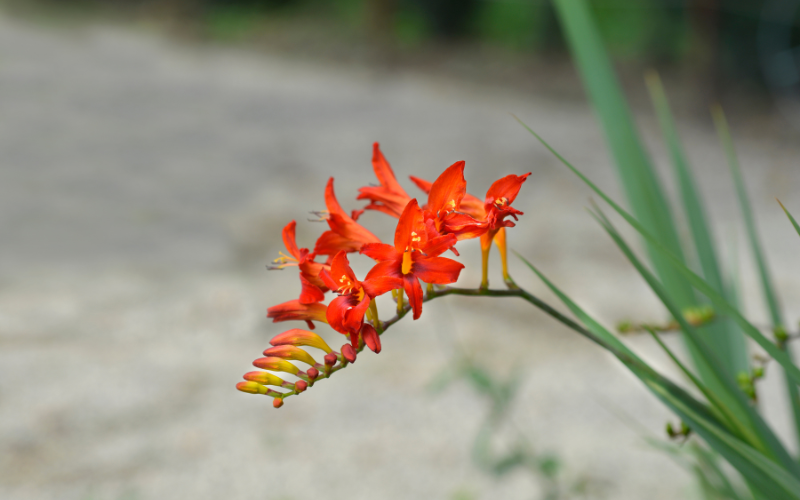
Montbretia is a captivating and lively flower native to South Africa, with slender, arching stems reaching heights of about 2 to 4 feet (60 to 120 cm).
The flower colors can vary, including shades of orange, red, yellow, and even bicolored combinations. Montbretia is relatively low-maintenance and can tolerate a wide range of growing conditions.
| Scientific Name | Crocosmia |
| Native Range | Grasslands of Southern and Eastern Africa, ranging from South Africa to Sudan |
| Flowering Season | Mid-Summer Through Mid-Fall |
Marigold
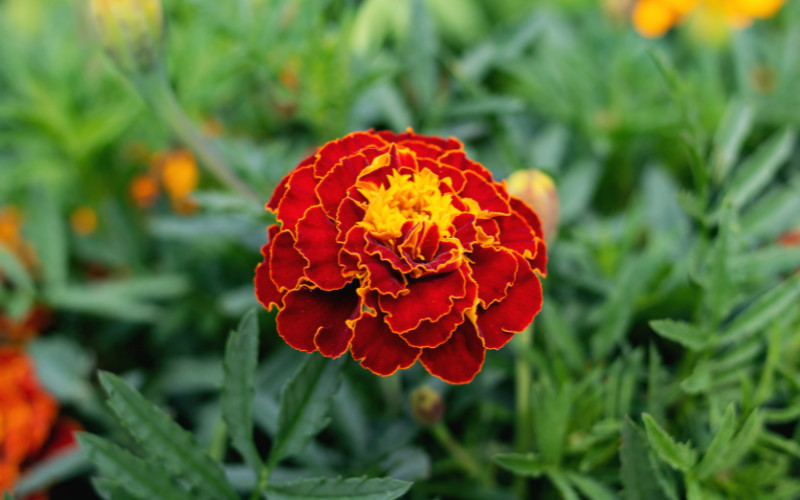
The marigold is a beautiful flower. Marigolds are popular ornamental flowers and are widely grown in gardens and landscapes around the world. Marigold flowers are most commonly yellow or orange, but they can also be red, mahogany, or even creamy white.
Some varieties may have bicolored or multicolored petals. Marigolds are easy to grow and well-suited for both novice and experienced gardeners. They thrive in full sun and well-draining soil, making them ideal for borders, edging, or containers.
| Scientific Name | Tagetes |
| Native Range | America |
| Flowering Season | Early summer until hard frost in late fall |
Gerbera Daisy
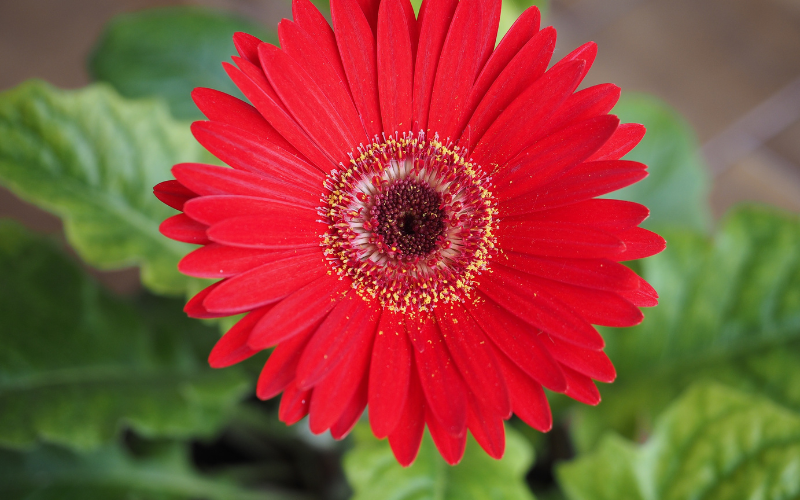
The Gerbera daisy, scientifically known as Gerbera jamesonii, is a popular and colorful flowering plant native to South Africa. The flowers come in a variety of colors, including red, pink, orange, yellow, and white.
The plant can reach a height of 12 to 18 inches (30 to 45 cm) and produces a single flower at the top. Gerbera daisies are recognized for their continuous blooming throughout the growing season.
| Scientific Name | Gerbera |
| Native Range | South Africa |
| Flowering Season | Late spring through autumn |
Hellebore
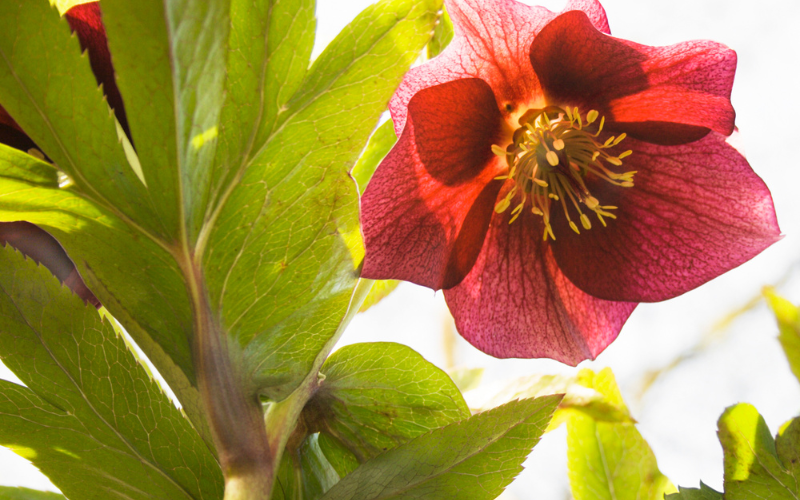
Hellebore is a beautiful and unique perennial flowering plant. It is also known as the Christmas rose or the Lenten rose. It is native to regions in Europe and Asia. These plants bloom in late winter or early spring.
The flowers have a waxy texture and are available in a variety of colors including white, pink, purple, green, and even near-black. They thrive in well-draining soil and generally need minimal care once they are established.
| Scientific Name | Helleborus |
| Native Range | Europe and Asia |
| Flowering Season | Winter until spring |
Pentas
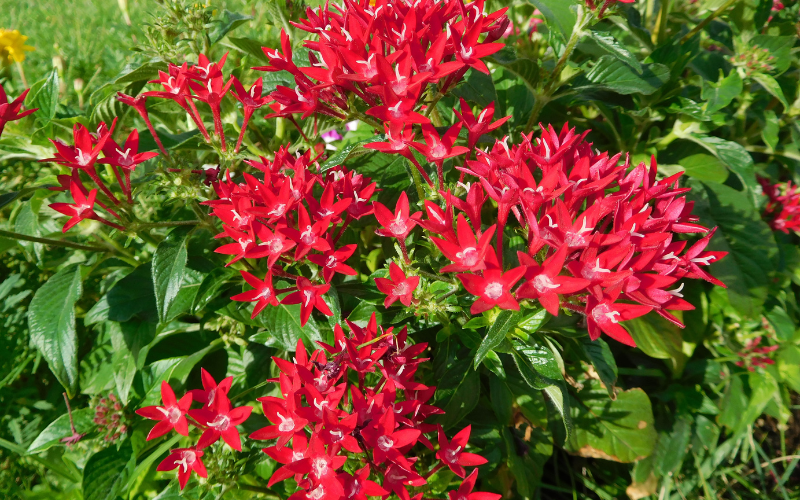
The pentas flower is a stunning and versatile plant. It is native to Africa. The flower clusters come in various colors, including shades of red, pink, lavender, white, and purple.
The flowers typically bloom from spring to fall in warmer climates. It can reach a height of 1 to 3 feet (30 to 90 cm). Pentas prefers full sun to partial shade for optimal growth and flowering.
| Scientific Name | Pentas lanceolata |
| Native Range | Southern Africa, the Comoros, Madagascar, and the Arabian Peninsula |
| Flowering Season | Spring to Fall |
Gloxinia
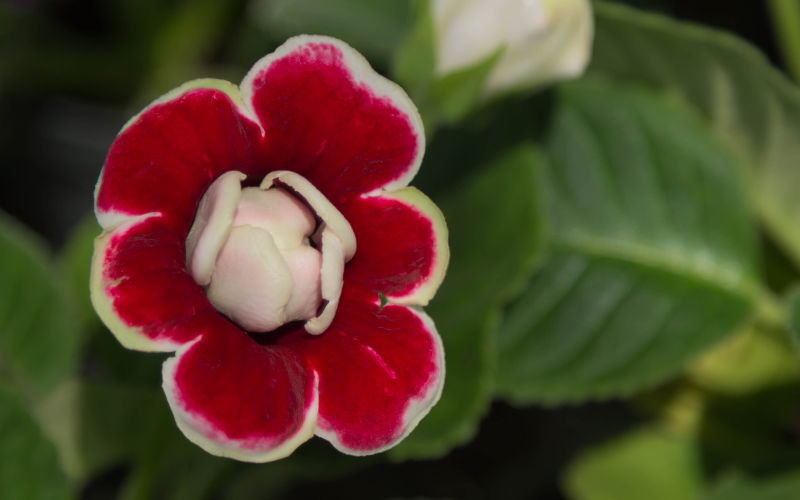
Gloxinia is a stunning flowering plant. It is scientifically known as Sinningia speciosa. It is native to the rainforests of Brazil. They come in a wide range of vibrant colors, including shades of purple, pink, red, blue, and white.
It is a compact and bushy plant, usually growing to a height of 6 to 12 inches (15 to 30 cm) with a spread of 6 to 8 inches (15 to 20 cm). This plant thrives in warm and humid environments.
| Scientific Name | Gloxinia |
| Native Range | Brazil |
| Flowering Season | Summer |
Poinsettia
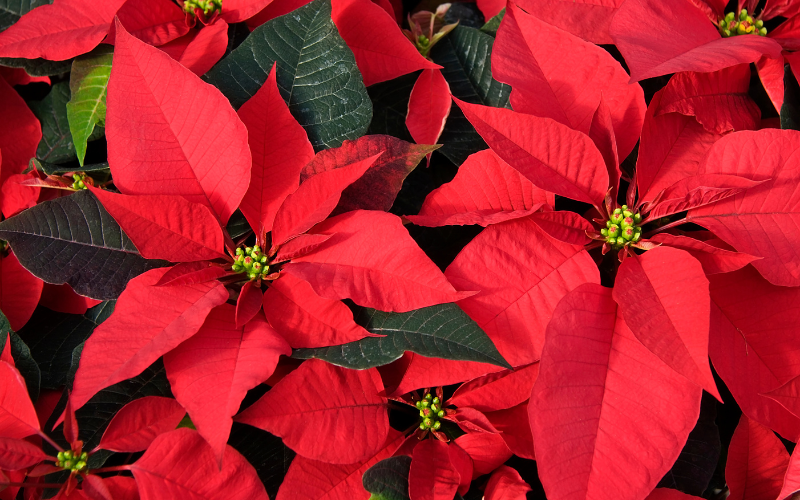
Poinsettias are beautiful flowers native to Mexico and Central America. They come in various colors, including red, pink, white, cream, or even marbled with multiple colors.
Poinsettias do best in bright, indirect light and require warm temperatures. They are sensitive to cold drafts.
| Scientific Name | Euphorbia pulcherrima |
| Native Range | Mexico and Central America |
| Flowering Season | Winter |
Red Trumpet Creeper
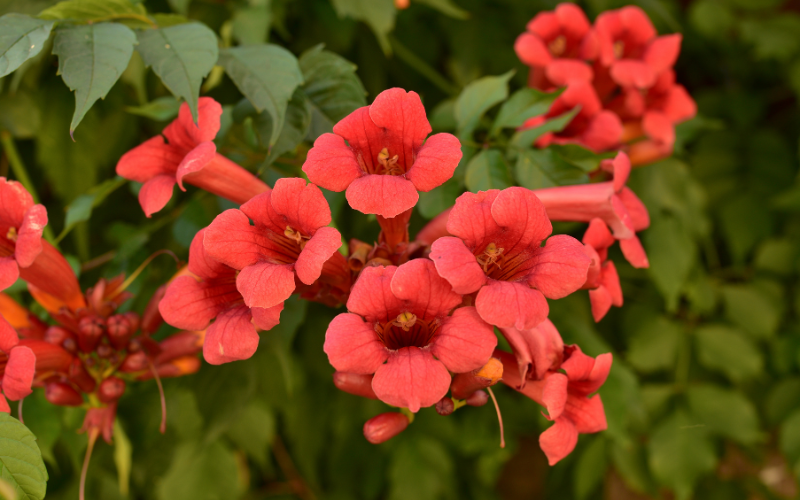
The red Trumpet Creeper, scientifically known as Campsis radicans, is a beautiful flower native to the southeastern United States and parts of Mexico.
They grow in clusters at the tips of the vine’s branches and are about 2 to 3 inches (5 to 7.5 cm) long. The Red Trumpet Creeper thrives in full sun to partial shade and prefers well-draining soil.
| Scientific Name | Campsis radicans |
| Native Range | Eastern, north-central, and south-central portions of the United States |
| Flowering Season | Summer and into fall |
Salvia
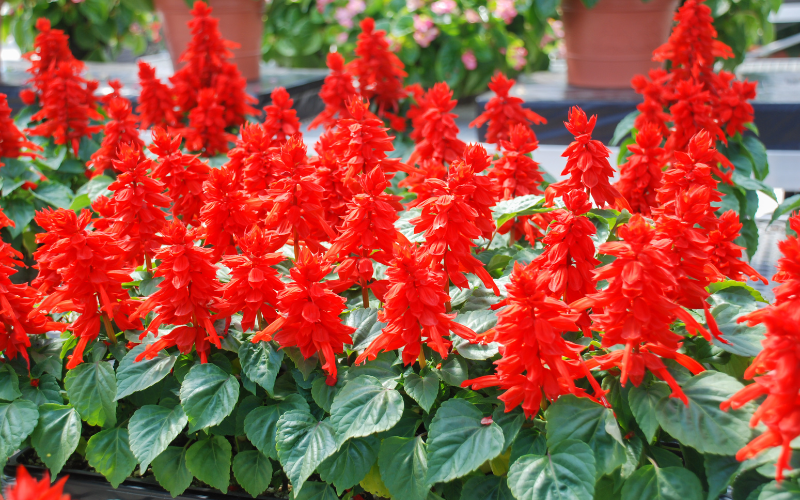
The Salvia flower, also known as sage, is a stunning and versatile plant native to North and South America. Its flowers come in shades of blue, purple, red, pink, white, and even bi-colored or variegated varieties.
Salvia is relatively easy to grow and is well-suited for various garden settings. They prefer full sun to partial shade and well-draining soil.
| Scientific Name | Salvia |
| Native Range | Europe and west-central Asia |
| Flowering Season | Early spring to late autumn |
Rose
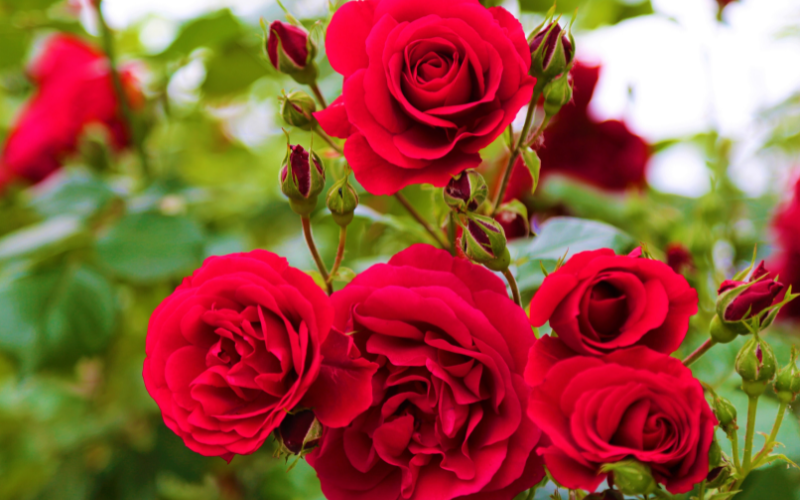
The rose is one of the most beloved and iconic flowers in the world. It is native to various regions in Asia, Europe, North America, and Africa. Roses come in various colors, including red, pink, white, yellow, orange, purple, and many more.
They require well-draining soil, ample sunlight, and careful maintenance, including pruning. Roses carry great symbolism, with each color symbolizing a different meaning.
| Scientific Name | Rosa |
| Native Range | Asia, Europe, North America, and Africa |
| Flowering Season | Late summer and even into the fall |
Spider Lily
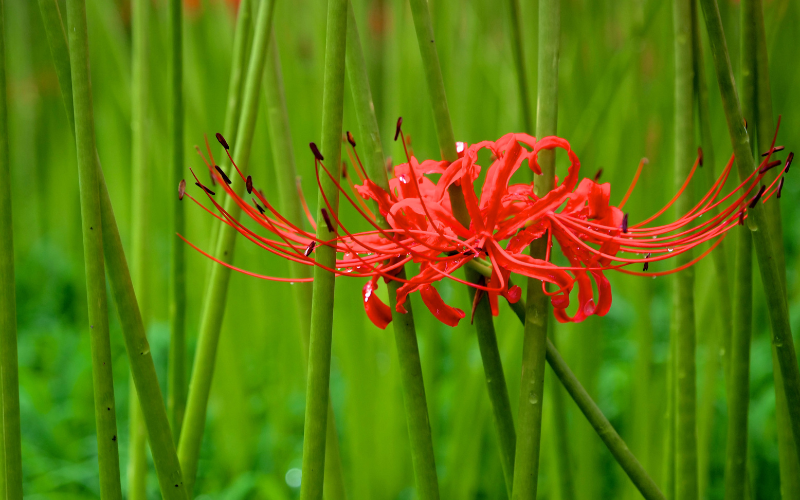
Spider Lily is a beautiful flower, scientifically known as Hymenocallis. The flower can be white, cream, yellow, pink, or other shades and typically blooms in late spring to early summer or late summer to early fall.
Spider lilies are generally low-maintenance and can thrive in a variety of soil types, from well-draining sandy soils to loamy garden soils. They prefer full sun to partial shade, depending on the species, and require moderate watering during their growing season.
| Scientific Name | Hymenocallis littoralis |
| Native Range | Belize, Brazil, Colombia, Costa Rica, Honduras, Mexico, Nicaragua, Panama, Peru and Venezuela |
| Flowering Season | Late summer and early fall |
Sweet Pea
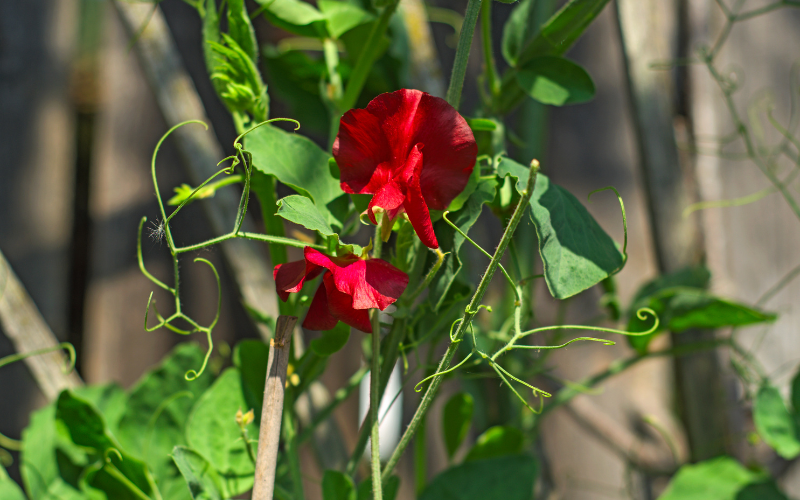
The sweet pea is a delightful and fragrant flowering plant native to parts of southern Italy and the Aegean Islands. Sweet pea flowers are charming and come in a wide range of colors, including shades of pink, purple, red, white, and blue.
Sweet peas are annual climbing plants that can grow up to 6 feet (2 meters) or more in height, depending on the variety and growing conditions.
| Scientific Name | Lathyrus odoratus |
| Native Range | Sicily, Southern Italy, and the Aegean Islands |
| Flowering Season | Late spring to early summer |
Verbena
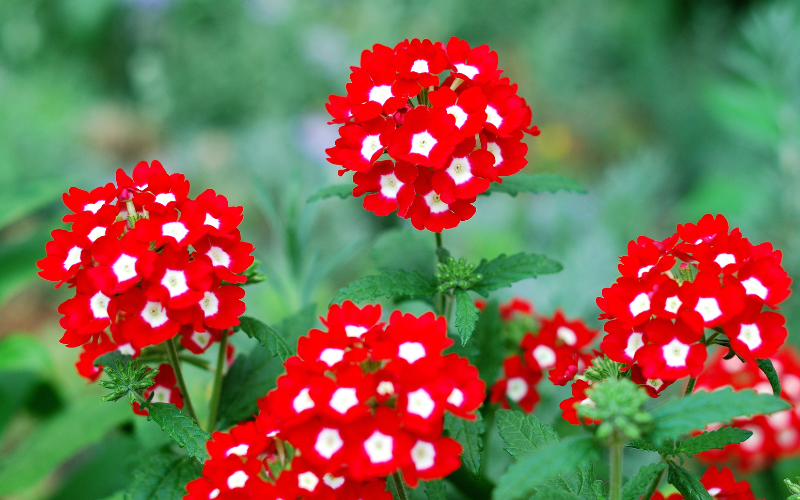
Verbena, a beautiful flower native to the Americas, Europe, and Asia, comes in various colors such as pink, purple, red, white, and blue.
Verbena plants typically grow to heights of 1 to 3 feet (30 to 90 cm) and have a long blooming period, starting in late spring or early summer and continuing until the first frost in the fall.
| Scientific Name | Verbena |
| Native Range | Europe |
| Flowering Season | Spring to mid-summer |
Carnation

Carnation is a beautiful flower. It is native to the Mediterranean region. Carnations are available in a wide range of colors, including white, pink, red, yellow, orange, purple, and bi-colored varieties. Carnations hold various symbolic meanings depending on their color.
Carnation flowers are known for their longevity, both on the plant and as cut flowers. They can last for several weeks with proper care, making them a popular choice for floral arrangements.
| Scientific Name | Dianthus caryophyllus |
| Native Range | Carnation |
| Flowering Season | Late spring |
Orchid
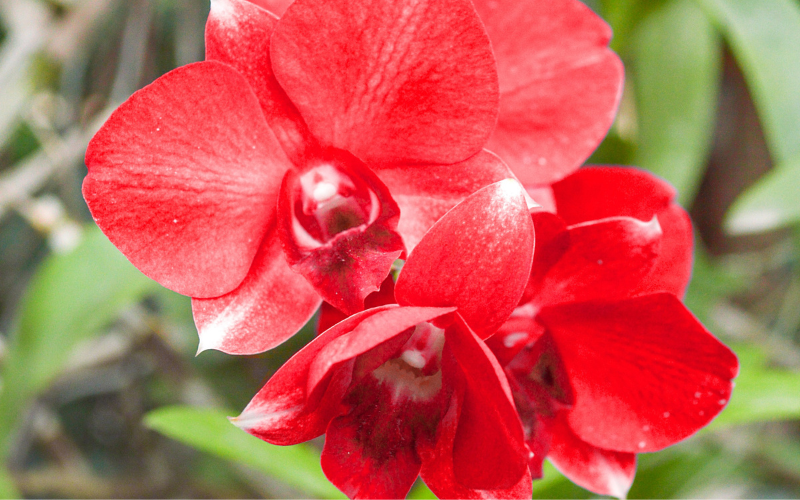
The orchid flower is one of the most exquisite and captivating flowers found in nature. They belong to the Orchidaceae family. Orchids are found in various ecosystems around the globe, from tropical rainforests to temperate climates.
These flowers come in a wide variety of species, each displaying its unique beauty. Orchids are popular as both indoor and outdoor plants.
| Scientific Name | Orchidaceae |
| Native Range | Around the globe |
| Flowering Season | Winter and Spring |
Azalea
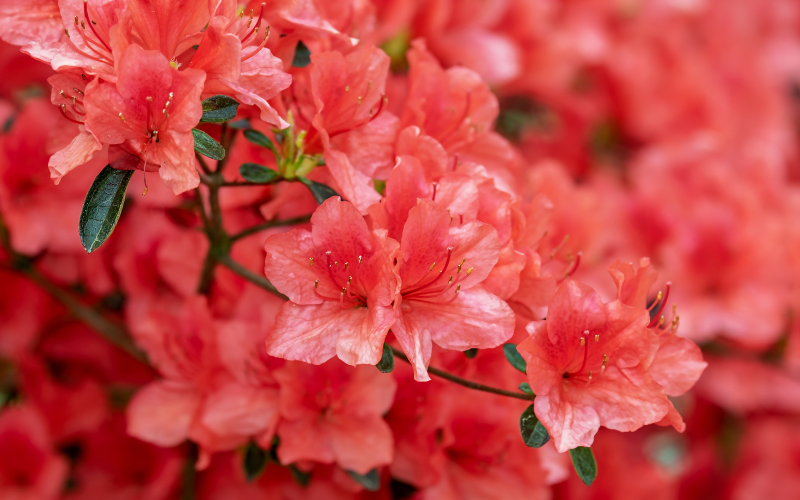
The Azalea flower is a true marvel of nature. It is native to Asia, particularly Japan and China. They are well-known for their vibrant and showy flowers, which come in a wide range of colors, shapes, and sizes.
The Azalea flower comes in various colors, including shades of white, pink, red, purple, orange, and even bi-color combinations. They bloom in spring, but there are also some varieties that bloom in late fall or early summer.
| Scientific Name | Rhododendron |
| Native Range | Asia, Europe and North America |
| Flowering Season | Late spring and early summer |
Poppy
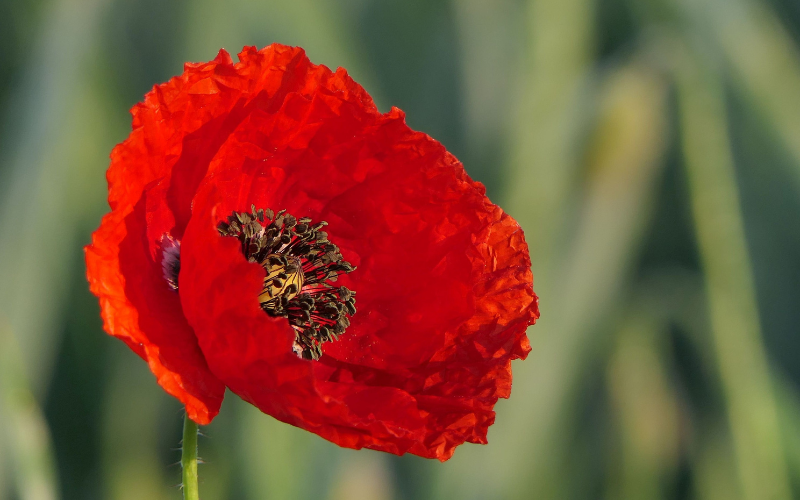
The Poppy is an iconic flower. It belongs to the Papaveraceae family. There are many different species of poppies, and they vary in size, color, and growth habits.
The flowers come in a range of colors, including red, orange, pink, white, and sometimes even shades of blue and purple. Poppies have various symbolic meanings across cultures. In some cultures, they also represent beauty, sleep, and consolation.
| Scientific Name | Papaveraceae |
| Native Range | Europe and Asia |
| Flowering Season | Late winter to early summer |
Cardinal
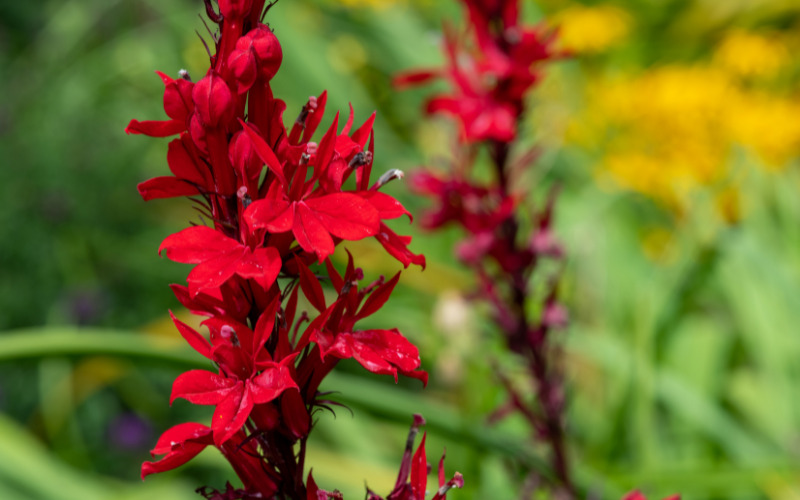
The Cardinal is a stunning and vibrant flower. It is scientifically known as Lobelia cardinalis. It is native to North America. The Cardinal Flower is known for its bright red or scarlet tubular flowers.
Cardinal Flowers prefer moist, well-drained soil and partial shade. The Cardinal Flower can reach heights of up to three feet, making it an impressive addition to any garden.
| Scientific Name | Lobelia cardinalis |
| Native Range | United States east of the Rocky Mountains |
| Flowering Season | Late summer |
Hardy Mum
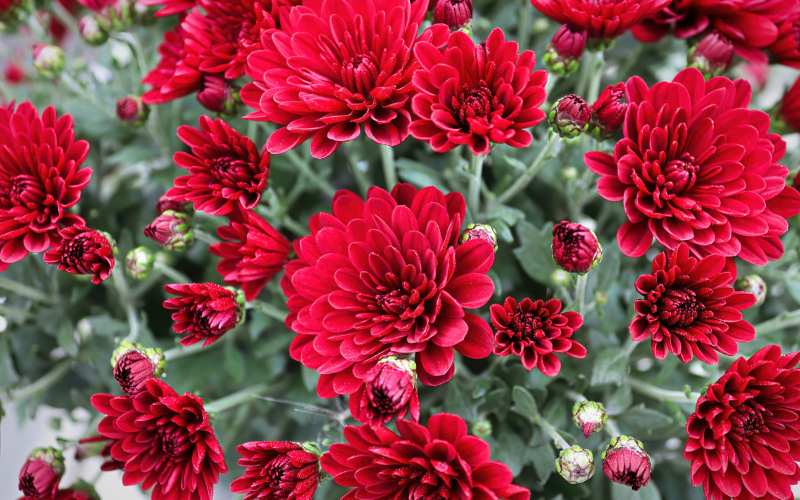
The Hardy Mum flower is a beautiful and resilient plant. It is also known as Chrysanthemum. The Hardy Mums are known for their late-season blooming, typically in the fall. These flowers come in a wide range of colors, including shades of white, yellow, orange, red, pink, and even purple.
Their versatility allows them to be used as stunning focal points in flower beds, borders, and containers, adding a stunning visual impact to any outdoor space.
| Scientific Name | Chrysanthemum morifolium |
| Native Range | Asia |
| Flowering Season | Late summer to fall |
Lycoris
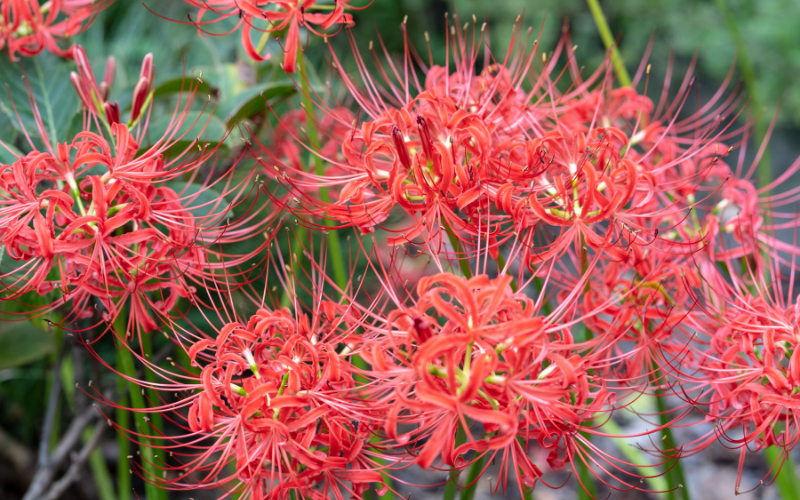
The Lycoris is a stunning and unique flower. It is commonly known as Spider Lilies or Surprise Lilies. It is native to Asia, particularly Japan, China, and Korea. This flower thrives in late summer or early autumn.
The Lycoris flower has a unique blooming pattern, with the flowers emerging first before the foliage, creating a stunning visual display. Lycoris flowers hold symbolic meanings. In Japan, they are associated with passing souls and are often planted near graves.
| Scientific Name | Lycoris |
| Native Range | Eastern and Southern Asia |
| Flowering Season | Summer |
Hardy Jewel Coreopsis
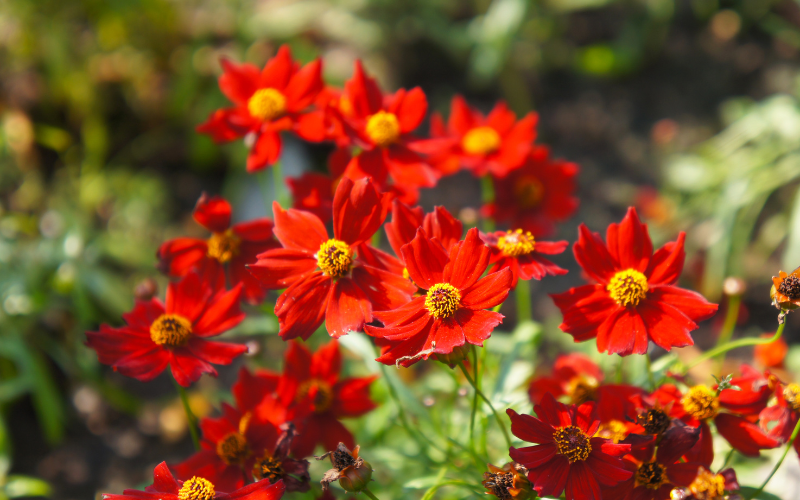
The Hardy Jewel Coreopsis is a cheerful and easy-to-grow flowering plant. It is also known simply as Coreopsis or Tickseed. It is native to North America. Hardy Jewel Coreopsis flowers are known for their vibrant and radiant colors, which often include shades of yellow, orange, and red.
These flowers can produce blooms from late spring through summer and sometimes even into early fall.
| Scientific Name | Coreopsis NOVA ‘Jewel’ |
| Native Range | USDA zone 3 (C. verticillata, C. tripteris) and range into the extreme heat of Florida and the Southwestern states |
| Flowering Season | Late Spring to Early Fall |
Peony
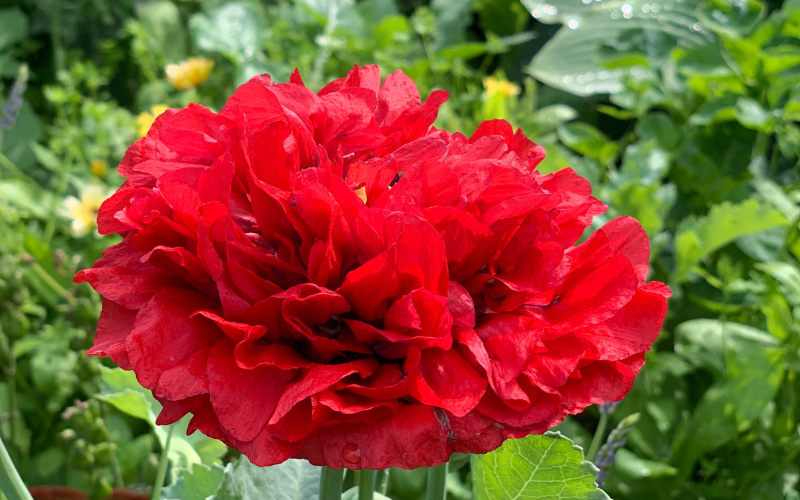
A peony is a beautiful flower. It is native to Asia. These flowers come in a variety of colors, including shades of white, pink, red, coral, and even yellow.
Peonies generally bloom in late spring to early summer, filling gardens with color and charm during this season. Peonies are commonly categorized into two main types: herbaceous peonies and tree peonies.
| Scientific Name | Paeonia |
| Native Range | Asia, Europe, and Western North America |
| Flowering Season | Late Spring to Early Summer |
Dahlia
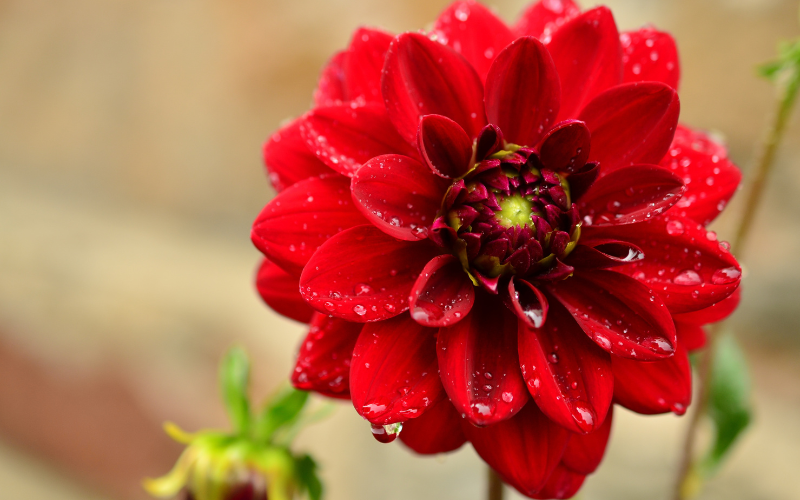
Dahlia is a beautiful flower. This beautiful flower is native to Mexico. These flowers showcase a vast array of colors, from vibrant reds, oranges, and yellows to soft pastels and even deep purples.
Dahlias typically bloom from late summer through fall. Dahlias have cultural importance in different regions. They are the national flower of Mexico. Dahlias are popular choices for gardens due to their versatility.
| Scientific Name | Dahlia pinnata |
| Native Range | Mexico and Central America |
| Flowering Season | Late Spring |
Yarrow
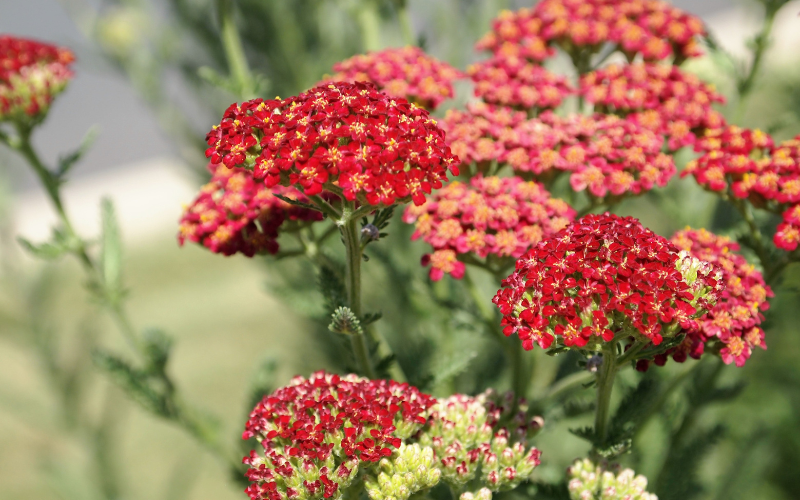
Yarrow is a stunning and versatile flower. It is scientifically known as Achillea millefolium. It is native America. Yarrow plants typically grow between 1 and 3 feet tall. The flowers come in various colors, including white, yellow, pink, and red.
It blooms from late spring through summer. Yarrow is often brewed into teas or used in tinctures and extracts for its antimicrobial, anti-inflammatory, and pain-relieving effects.
| Scientific Name | Achillea millefolium |
| Native Range | North America, Europe, and Asia |
| Flowering Season | Summer |
Verbena
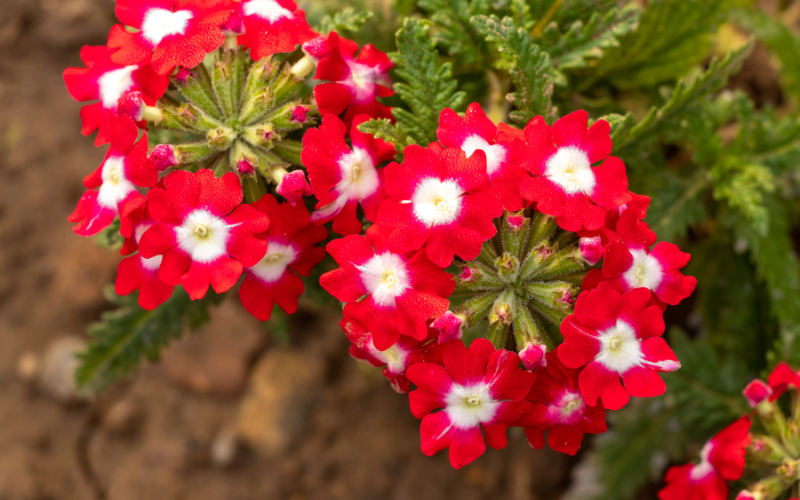
Verbena is a beautiful flower. It is native to both North and South America. These flowers come in various colors, including shades of purple, pink, red, blue, and white. The flowers typically from late spring through summer and into early fall.
Verbena is a hardy plant that can thrive in a wide range of climates and soil conditions. It’s well-suited for both gardens and containers.
| Scientific Name | Verbena Officinalis |
| Native Range | Americas and Asia |
| Flowering Season | Spring to Mid-summer |
Sunflower
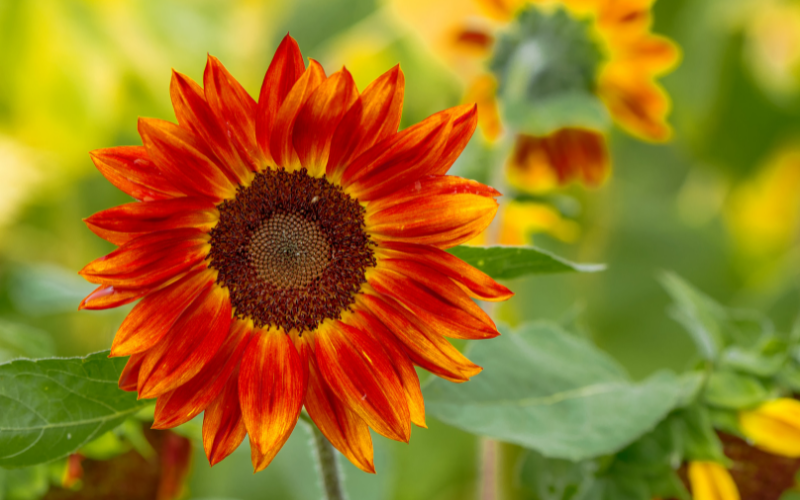
The sunflower is a gorgeous flower. Its scientific name is Helianthus annuus. It is native to North America. The flowers can reach heights of 3 to 15 feet (1 to 4.5 meters), depending on the variety.
Sunflowers are known for their summer blooms, typically appearing from late spring to early autumn. There are numerous sunflower varieties, including the traditional yellow sunflower, as well as red, orange, and even multi-colored cultivars.
| Scientific Name | Helianthus |
| Native Range | North America and Mexico |
| Flowering Season | Summer |
Scarlet Bee Balm
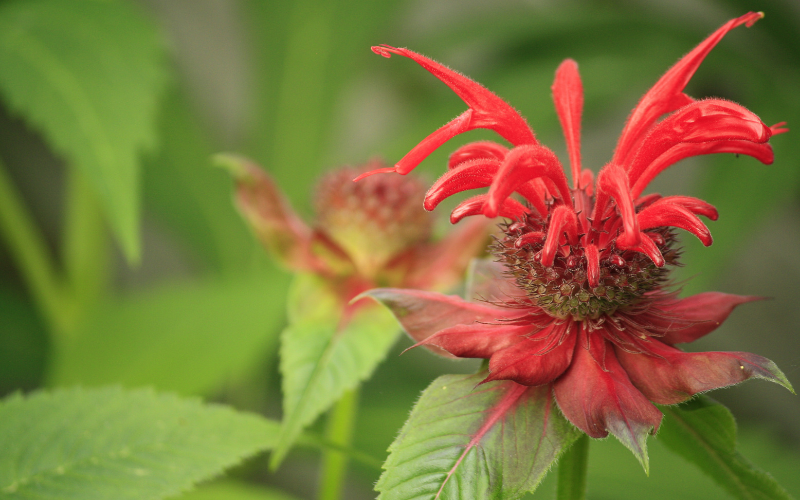
The Scarlet Bee Balm is a vibrant and stunning flower. It is also known as Oswego Tea or Bergamot. It is native to eastern North America. The flowers are typically bright red but can also range in color from pink to scarlet.
Each flower is about 2 inches (5 cm) long. Scarlet Bee Balm blooms in the summer, usually from mid to late summer. It thrives in moist, well-drained soil and prefers full sun to partial shade.
| Scientific Name | Monarda didyma |
| Native Range | Eastern North America and Canada |
| Flowering Season | Summer |
Royal Poinciana
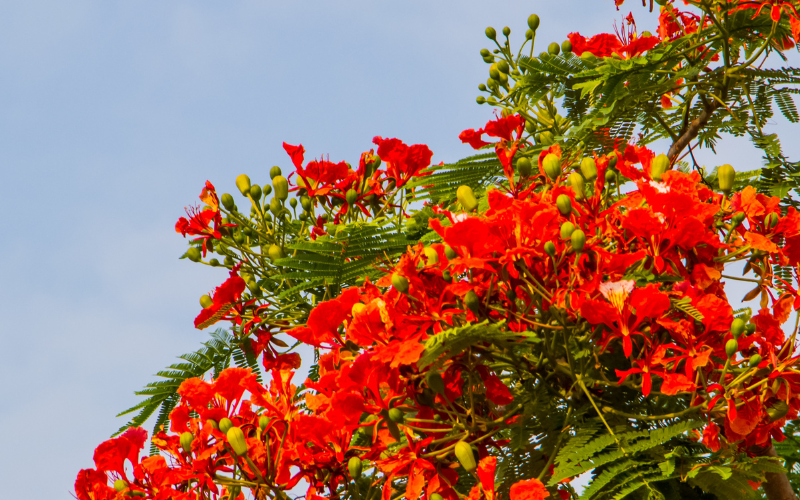
Royal Poinciana is a beautiful flower. It is also known as the Flame Tree or Flamboyant Tree. The flowers have five petals each and are typically bright red or orange. The Royal Poinciana flowers can be quite large, often reaching 4 to 5 inches (10 to 13 cm) in diameter.
It blooms during the late spring and early summer months. It prefers well-drained soil and is drought-tolerant once established.
| Scientific Name | Delonix regia |
| Native Range | Madagascar |
| Flowering Season | Late spring to early summer |
Red Valerian
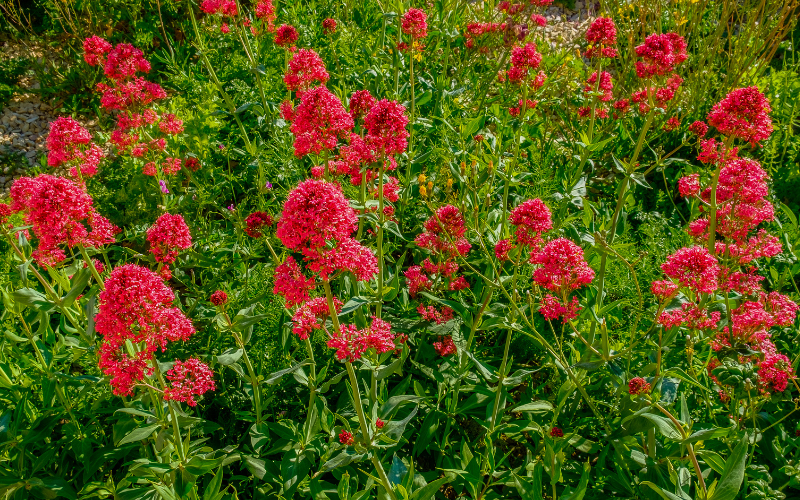
Red Valerian is a stunning flower. It is scientifically known as Centranthus ruber. It is native to the Mediterranean region. They can also come in shades of pink or white. Red Valerian flowers are relatively small, typically measuring around 1/2 to 3/4 inch (1.3 to 2 cm) in diameter.
Red Valerian is a hardy and low-maintenance plant that thrives in a variety of conditions. It prefers full sun but can tolerate partial shade.
| Scientific Name | Centranthus ruber |
| Native Range | Europe |
| Flowering Season | Early summer through until early autumn |
Prickly Pear
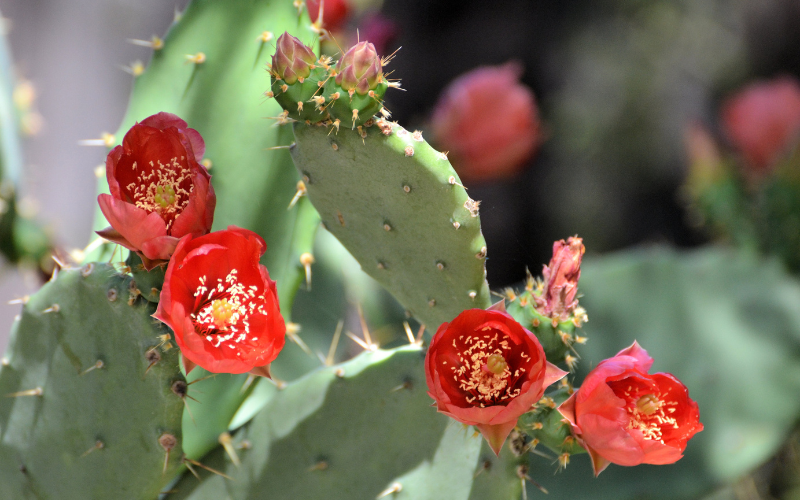
The prickly pear is a unique and stunning flower. It is also known as Opuntia. It is native to America. It comes in various colors, including yellow, red, orange, and pink. It typically blooms in late spring to early summer.
The flowers are remarkably resilient, withstanding extreme temperatures and minimal water availability. Prickly Pear cacti are well-suited to arid and semi-arid regions, including deserts and dry landscapes.
| Scientific Name | Opuntia |
| Native Range | Mexico |
| Flowering Season | Late spring to early summer |
Mask Flower
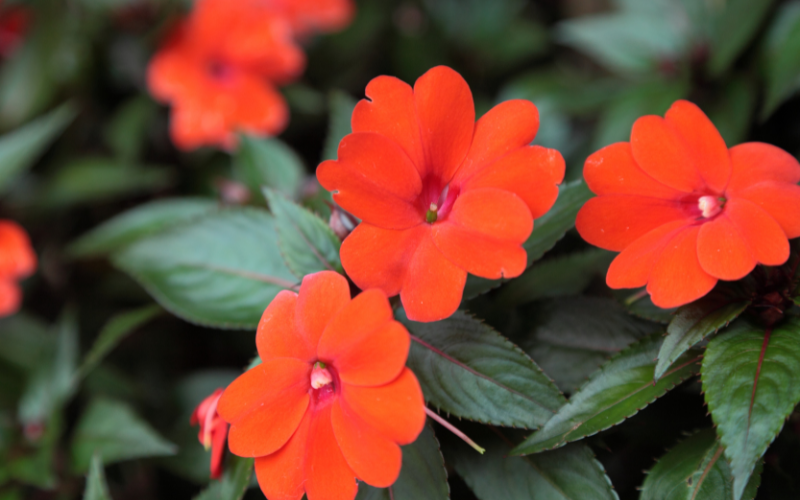
Mask Flower is a gorgeous and adaptable flower. It is also known as Alonsoa meridionalis. It is native to Chile. The flowers of this plant are tubular, typically bright red or orange in color.
With proper care and attention, this exquisite flower can thrive in a variety of climates, making it a versatile choice for garden enthusiasts and florists alike.
| Scientific Name | Alonsoa meridionalis |
| Native Range | Central America |
| Flowering Season | Late spring to Summer |
Hibiscus
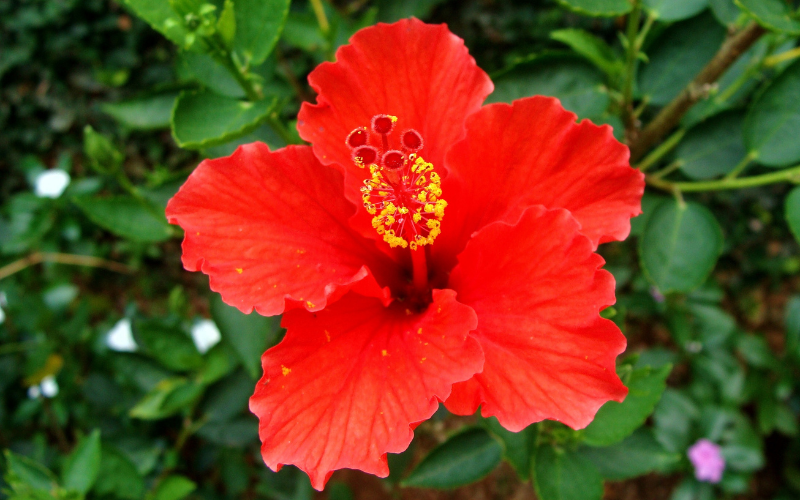
Hibiscus is a lovely flower. The flowers can range in color from white and yellow to shades of pink, red, and even purple. Hibiscus is a perennial plant that can withstand colder climates and is cultivated for its large, colorful flowers.
It prefers full sun to partial shade and well-drained soil. They can symbolize beauty, femininity, and delicate beauty in some regions.
| Scientific Name | Hibiscus rosa-sinensis |
| Native Range | Throughout the world |
| Flowering Season | Summer |
Hyacinth
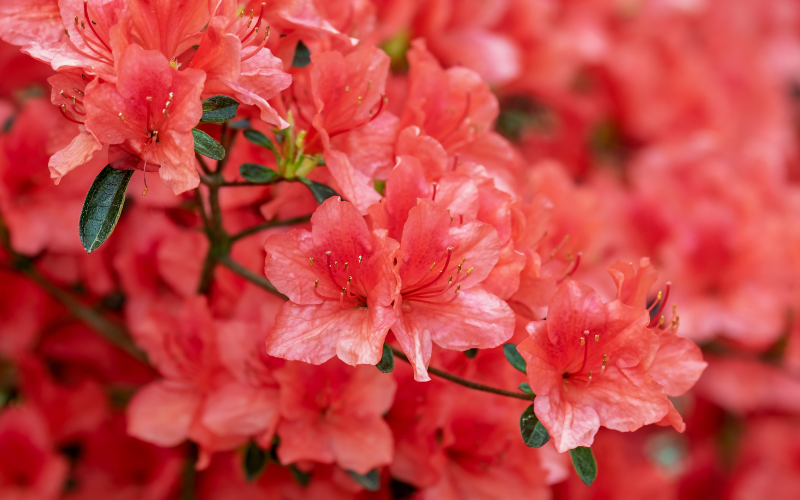
Hyacinth is a beautiful flower. It is native to the Mediterranean region. They come in a variety of colors, including purple, blue, pink, white, and yellow. They are commonly grown in gardens and flower beds, as well as in containers.
These flowers thrive in well-drained soil and prefer full to partial sunlight. Hyacinth flowers symbolize various meanings, including sincerity, constancy, and beauty.
| Scientific Name | Hyacinthus |
| Native Range | Southwestern Asia |
| Flowering Season | Spring |
